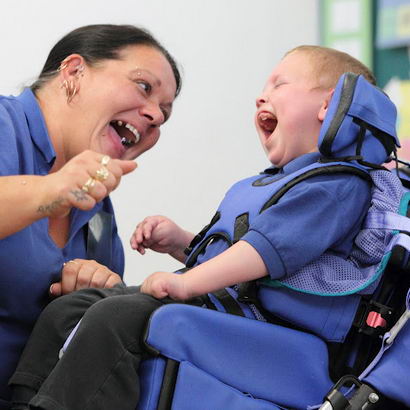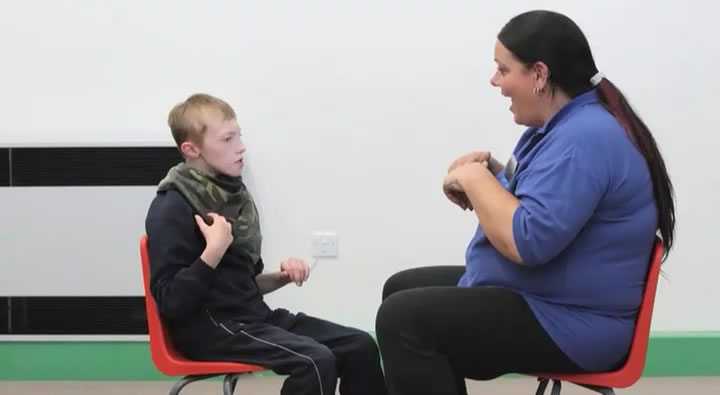
To the uninitiated, teaching those with profound or severe learning difficulties might be misconstrued as simple (because you're teaching children who are operating at an early developmental level) or boring (because these children learn at a very slow pace). This couldn't be further from the truth.
The complexity and intellectual challenge of teaching this group of learners is a profound challenge that is the equivalent of teaching a National Curriculum subject to a very high level.
One of the most rewarding parts of the curriculum challenge is finding new ways to communicate with children who communicate in very different ways from their mainstream peers.
Intensive Interaction is one of a range of methods described at length across this resource. It's a way of building and
developing relationships with socially isolated or withdrawn children who find it hard
to communicate.
It's a lot of fun to use and it can produce real results that build a bridge of communication to a child with severe communication difficulties.
In this clip, Corinna Cartwright, a head teacher, talks about the importance of
Intensive Interaction.
What is successful Intensive Interaction built on?
How should an adult start using Intensive Interaction?
Return
It is based strongly on relationships and that person has to have a good relationship and understanding of that child.
Return
The adult starts by copying the actions, the movements and the sounds of the child and listens very carefully to the tempo and to the emotions that the child conveys. That enables them to realise that the adult has empathy with them. The adult might leave a gap after a while and the child will turn to the adult. By doing this, the child will be empowered by the realisation that they are starting to control meaning. This is one of their first opportunities to realise that they can control their environment. When they realise this, they get immense pleasure and a greater sense of self-determination.
Return
Intensive Interaction works best when the interactor:
- Allows the learner to take control and for the most part, lead the session;
- Is seen by the learner to enjoy the experience of the interaction;
- Gives his/her total attention to the learner;
- Treats all actions and vocalisations made by the learner as positive attempts to communicate;
- Uses as little language as possible – often hello and goodbye are sufficient for those with PMLD;
- Does not give up too early, either in the session itself or over time – it may take many years to maximise a learner's communicative abilities;
- Documents changes – using recording sheets and videoing some sessions with a static wide angle lens;
- Talks to their colleagues and shares experiences in a general plenary involving the learners after every discrete session.
It's a balancing act, but part and parcel of the exciting challenges and rewards that are always involved when teaching these children.
